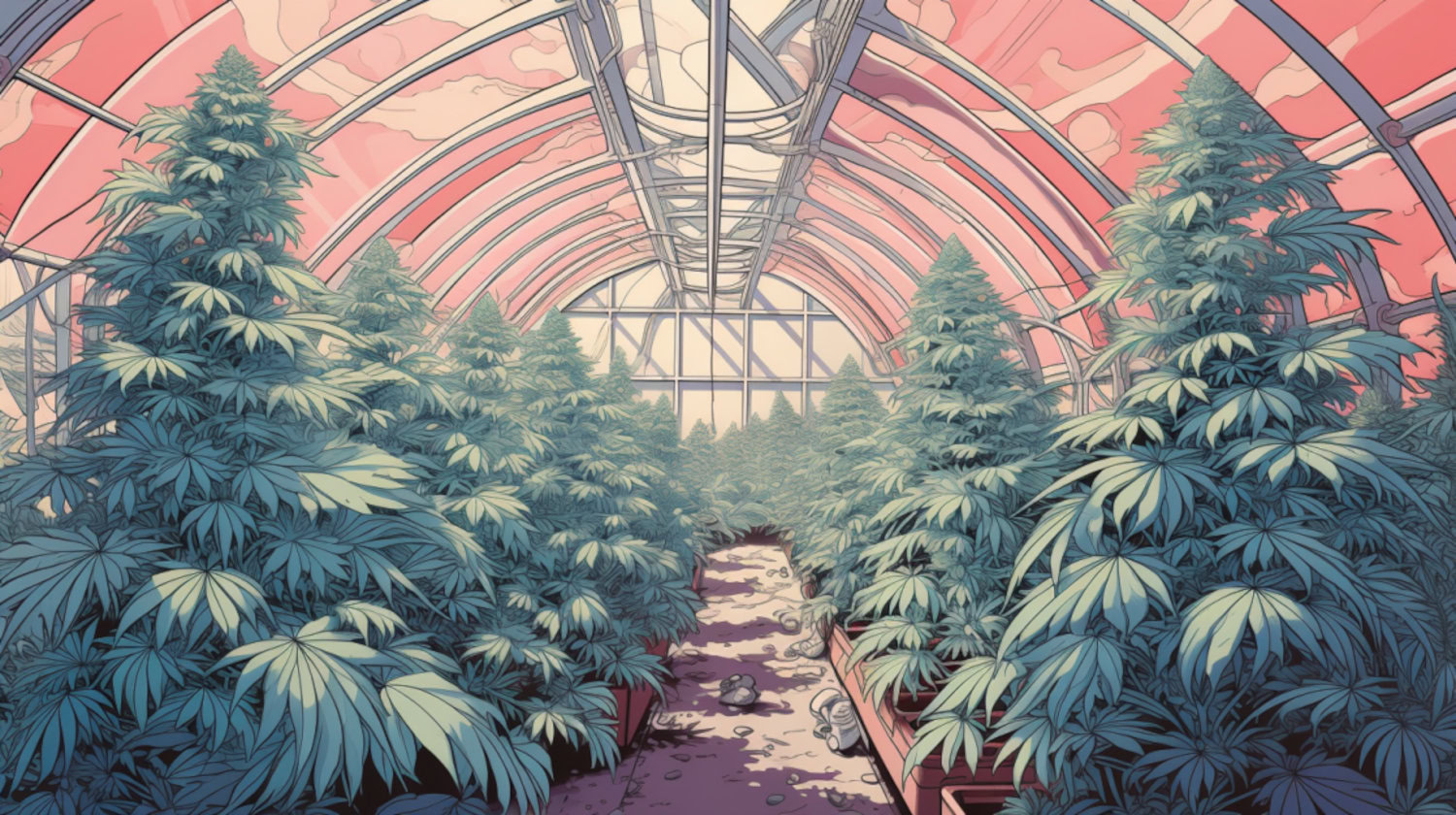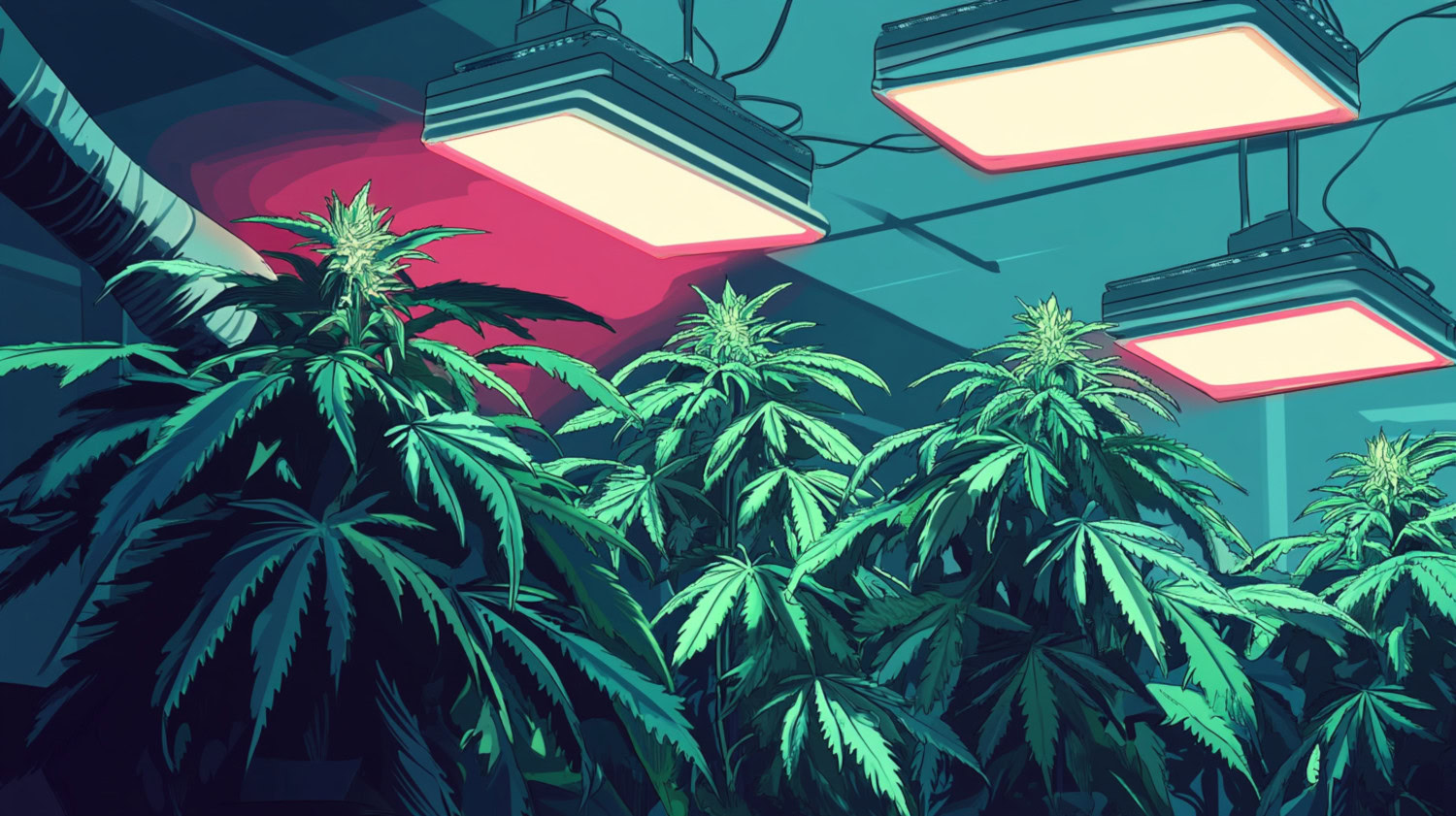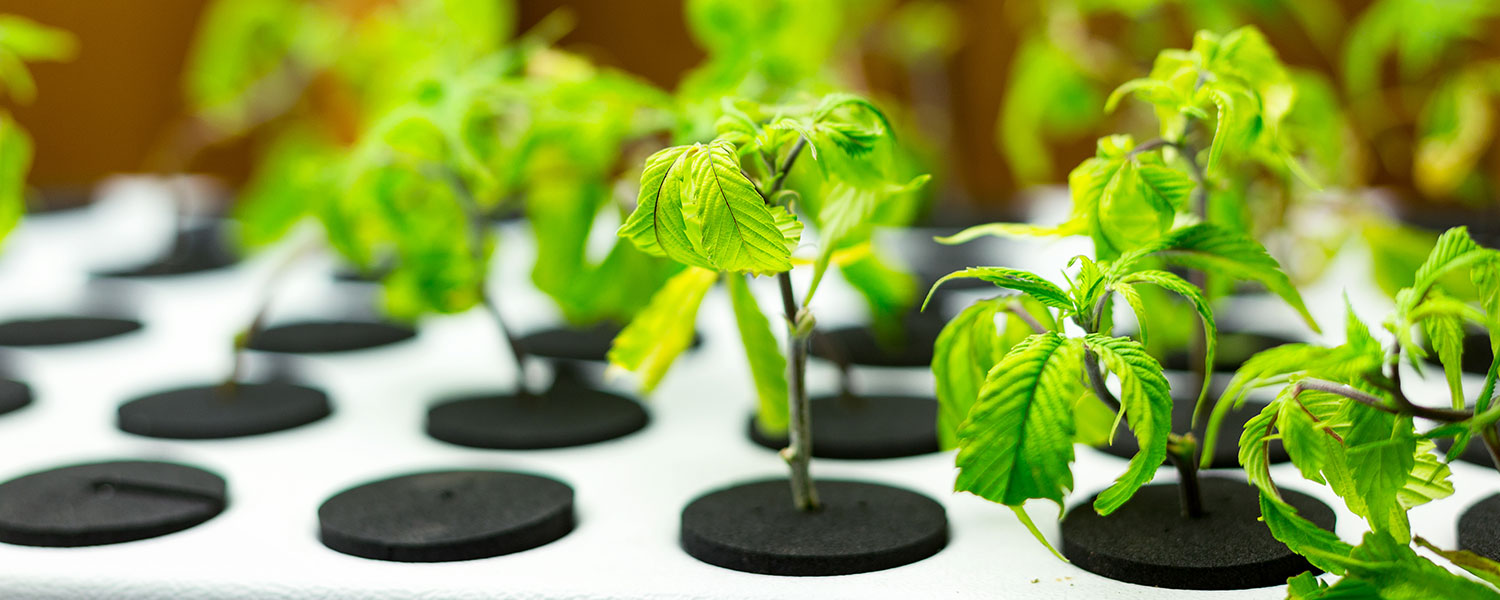In This Article
- What is Hermaphrodite Cannabis?
- What Causes Hermaphrodite Cannabis?
- What are the Early Signs of a Hermie Plant?
- How to Accurately Identify Female and Male Cannabis Plants
- Why is Hermaphrodite Cannabis a Problem?
- What Should You Do With a Hermie Plant?
- A Note on Safety and Expectations
- How to Prevent Hermaphrodite Cannabis
- Tend to the Roots
- Adequate Lighting
- Sufficient Watering
- Ideal Temperature
- Prune Gently
- Limit Nutrient Application
- Can You Smoke Hermaphrodite Cannabis?
- References
Key Takeaways
- Hermaphrodite cannabis has both female flowers and male pollen sacs. These plants can pollinate the female plants around them.
- Hermaphrodite cannabis plants are usually caused by environmental stress.
- Prevent hermaphrodite plants by reducing stress on the plants. Remove hermaphrodite plants immediately, should they occur.
As a cultivator, the goal is to grow healthy, resinous buds that consumers prefer for their potential effects. Among the many important steps involved in cannabis cultivation is gender detection.
Screening your plants to determine their sex could mean the difference between growing a THC-rich female plant and male plant that won't produce buds. There's also the risk of growing hermaphrodite cannabis, also known as a “hermie plant.”
Spotting hermie plants early gives you the best shot at protecting your harvest. It won’t guarantee perfect buds, but it can help you grow better plants next time too.
What is Hermaphrodite Cannabis?
Hermaphrodite cannabis, often called a "hermie plant," is a cannabis plant that develops both male and female reproductive parts. Instead of producing just flowers or just pollen, these plants grow both buds and pollen sacs at the same time.
While this trait is natural in the plant world, it's not ideal for cannabis cultivation. When a plant develops pollen sacs alongside its flowers, it often leads to unwanted seed production. Seeds can reduce the quality of the buds, making them less potent and less flavorful. For most growers, that means a disappointing harvest.
Cannabis plants are typically dioecious, which means male and female flowers grow on separate plants. Researchers believe cannabis may have evolved from hermaphrodite ancestors. This is similar to about 6% of all flowering plants in nature.1
Common signs of a hermaphrodite plant include:
- Pollen sacs and flower buds growing at the same nodes
- Small, ball-like structures alongside delicate hairs
- Clusters of yellow, banana-shaped growths, often called "nanners"
What Causes Hermaphrodite Cannabis?
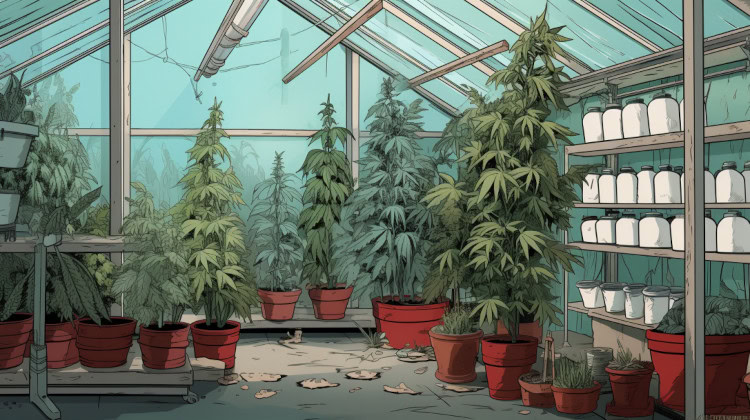
Hermaphrodite cannabis plants, AKA “hermies,” happen when a plant grows both male and female reproductive organs. This is usually not something growers want, as it can lead to seeded buds and lower-quality flower.
While some plants are more genetically prone to hermaphroditism, stress is often the biggest trigger. When a cannabis plant feels threatened, it may try to protect its future by producing seeds. In simple terms, it’s a survival mechanism.
Common stress factors that can cause hermaphroditism include:
- Light stress: Interrupting the plant’s dark cycle during flowering is one of the most common triggers.
- Temperature swings: Extreme heat (above 80°F or 27°C) or prolonged cold can push plants into stress mode.
- Physical damage: Broken branches, root shock during transplanting, or rough pruning can all take a toll.
- Nutrient imbalances: Over-fertilizing or underfeeding, especially with calcium or nitrogen, can disrupt healthy growth.
- Pests and diseases: Mites, mold, or other plant illnesses can trigger survival instincts in cannabis plants.
- Chemical exposure: Some substances, like certain pesticides or plant hormones, may increase the risk of hermie traits.
It’s also possible for hermaphroditism to happen naturally in some cannabis strains. In most cases, maintaining a stable and low-stress growing environment is the best way to reduce the risk.
What are the Early Signs of a Hermie Plant?
Spotting the early signs of a hermie plant means that you can save harvesting time and tweak your growing environment to ensure the same thing doesn't happen again in the future.
Flowers usually reveal their gender 3-6 weeks deep into their growth before the flowering stage. However, if it's a hermie plant, you may not notice until about 4-7 weeks into the flowering stage. If your plant has hermied, pollen sacs will appear scattered along the plant’s nodes (the stem from which branches grow), and light translucent white or orange hairs will merge with V-shaped calyx-coated pistils.
When it comes to distinguishing a hermaphrodite cannabis plant:
- Lookout for yellow “banana” clusters or “manners.”
- If you look closely, you might also observe yellow-colored “bananas” (stamens) on the bud’s hairs (pistils).
- Typically, cannabis cultivators will find a stamen growing inside a male pollen sac, but a severely stressed hermie plant may also produce them on the female buds.
How to Accurately Identify Female and Male Cannabis Plants
The most notable feature of a female cannabis plant is the hairy coat she wears. Delicate and almost translucent orange or white hairs (also known as ‘pistils’ or ‘stigmas’) encapsulate her nodes. With time, she grows a thicker mane that begins to emerge from bottom to top.
A female cannabis plant’s hair is an indication that she is ready to start forming flower. Lots of hair signals the formation of calyxes, which eventually blossom into cannabinoid-enriched flowers. The calyxes remain seed-free if a male plant does not pollinate the female; pollination results in dense seed formation bound by the protective calyxes.
“Beginning around week 4 of the flowering period, the appearance of individual anthers or clusters of anthers within the bract tissues adjacent to the stigmas was observed in hermaphroditic flowers. The anthers were visible in weeks 4–7 of the flowering period and were present until harvest. In rare instances, the entire female inflorescence was converted to large numbers of clusters of anthers,” reads an excerpt from the Frontiers in Plant Science research article.
“In most cases, small clusters of anthers developed within certain female flowers, replacing the pistil. In rare cases (two out of 1,000 plants), the entire female inflorescence was displaced by large numbers of clusters of anthers instead of pistils,” the researchers note. These anthers clearly represent the difference between male and female cannabis plants since males do not have them, regardless of the cannabis plant stages. Instead, males have sturdier stalks, fewer leaves, and pollen sacs instead of female buds.1
Why is Hermaphrodite Cannabis a Problem?

Hermaphrodite plants, like male plants, produce pollen, and that means seeds. If you're not looking to breed a new strain, seeds can only mean subpar bud that you need to pick the seeds out of – not a fun experience.
Not only this, but researchers confirm that the “allocation of resources by the female plant to pollen production, followed by seed production, can result in disproportionately lower levels of terpenes and essential oils (by up to 56%) in the pollinated flowers compared to unfertilized female flowers.”1 So, cannabis flower with seeds isn't just inconvenient, it contains lower quantities cannabinoids and terpenes, making for an overall poor quality harvest.
What Should You Do With a Hermie Plant?
Discovering a hermaphrodite plant in your grow space can feel like a setback, but there are ways to manage the situation without losing your entire harvest. The right choice depends on how far along the plant is, how much pollen has been released, and your personal goals as a grower.
Here are your main options:
- Remove the plant entirely. If you are growing near other cannabis plants, the safest choice is to remove the hermie as soon as you spot it. This helps prevent pollination, which can lead to seeded buds across your entire crop.
- Isolate the plant. If you have space, you can move the hermie to a separate room or area where it cannot pollinate nearby plants. Some growers choose to let the plant finish its life cycle to collect seeds, though these seeds may also produce hermaphrodites in the future.
- Remove the male parts manually. In some cases, you can carefully remove the pollen sacs, also known as "nanners," with tweezers. This option carries more risk because it is difficult to catch every pollen sac before it opens. If you try this method, work slowly, wear gloves, and keep a close eye on the plant for new growth.
- Harvest early, if needed. If the plant is close to harvest time and has not released much pollen yet, you might choose to cut your losses and harvest early. This could help you save some unpollinated flower, although the quality may vary.
A Note on Safety and Expectations
Working with hermaphrodite plants is always a bit of a gamble. Even experienced growers can miss hidden pollen sacs, which can lead to seeds in your final product. If your goal is high-quality, seed-free buds, removing the hermie plant early is usually the safest bet.
How to Prevent Hermaphrodite Cannabis
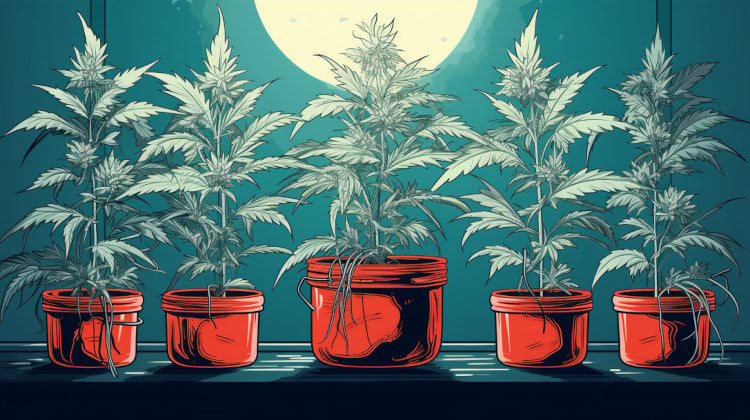
A surefire way to prevent hermaphrodite cannabis is to keep stresses to a minimum in the growing environment. Think of cultivation as plant care. Healthy plants need consistent care, like any living thing. The more attention you give them, the better they’ll grow.
Some tests, like the youPCR gender test, detect plant DNA, gender, and cannabinoid ratios during the plant's early stages. Most strains that develop hermies emerge from feminized seeds. However, there are no obvious genetic markers that signify if a plant is more likely to be a hermie plant.
There are a number of factors to consider if you want to avoid growing a hermie plant that produces feminized seeds, which only produce female plants. They are as follows:
Tend to the Roots
If a cannabis plant's roots become damaged during transplantation, stress is guaranteed. Prevent your plants from going into survival mode by enhancing your growing environment with the tips featured on this list.
Adequate Lighting
Unexpected changes to light intensity and cycle will send your cannabis plants into stress mode. If you plan on changing lighting fixtures or moving your plants, allow them to adapt slowly. Most growers recommend boosting light intensity to 800 to 1500 µmol/m2/s PPFD during the flowering stage.
Sufficient Watering
Too much or too little water will dampen plant growth and may cause leaf curling. If your plant goes a long time without sufficient water, the stress will likely cause it to become a hermaphrodite. Every 2-3 days is the sweet spot for watering, and make sure you choose the best soil for growing cannabis, too. A sandy loam-compost mix works well for most cultivators.
Ideal Temperature
The perfect temperature for growing cannabis is around 27 Celsius (°C) or 80 Fahrenheit (°F).
Prune Gently
Aggressive pruning during the flowering stage is not advisable. Start slowly during the vegetative phase and progress steadily. Focus on high-priority leaves and buds before waiting 1-2 weeks until the next pruning session.
Limit Nutrient Application
A micro-growing 101 tip that every grower needs to know is to limit fertilizers and pesticides during cannabis cultivation. This is especially important when the plant is young since it may force the plant to defend itself and undergo hermie metamorphosis.
Some studies have shown that certain chemicals, such as silver nitrate or silver thiosulfate, can cause female plants to produce male flowers. But this isn’t usually something home growers need to worry about.
Specifically, researchers claim that “silver nitrate inhibits ethylene action in plants and increases male sex expression in marijuana, cucumber, and gourd plants.” Studies also show that silver thiosulfate prompts male flower formation on genetically female hemp plants.”1
Can You Smoke Hermaphrodite Cannabis?
If you are reading this article at the point where your plants have already reached full maturity, you may wonder if you can smoke hermaphrodite plants. As briefly mentioned at the beginning of this article, you can smoke a hermie plant if you really want to! The choice is yours, but the experience may be milder and less flavorful compared to well-cultivated cannabis. Some people choose to use hermaphrodite plants, but the taste and effects may not be as desirable as carefully cultivated female plants.
Some growers may decide to harvest hermaphrodite cannabis for the seeds, too. This is unlikely to generate any real profit since the seeds are only capable of producing female cannabis plants. Seeds aren’t meant for smoking. The harsh smoke isn’t just unpleasant; it could irritate your lungs. Stick with the flower for a better experience.
References
- Punja ZK, Holmes JE. Hermaphroditism in Marijuana (Cannabis sativa L.) Inflorescences – Impact on Floral Morphology, Seed Formation, Progeny Sex Ratios, and Genetic Variation. Frontiers in Plant Science. 2020;11. doi:https://doi.org/10.3389/fpls.2020.00718 ↩︎
The information in this article and any included images or charts are for educational purposes only. This information is neither a substitute for, nor does it replace, professional legal advice or medical advice, diagnosis, or treatment. If you have any concerns or questions about laws, regulations, or your health, you should always consult with an attorney, physician or other licensed professional.

